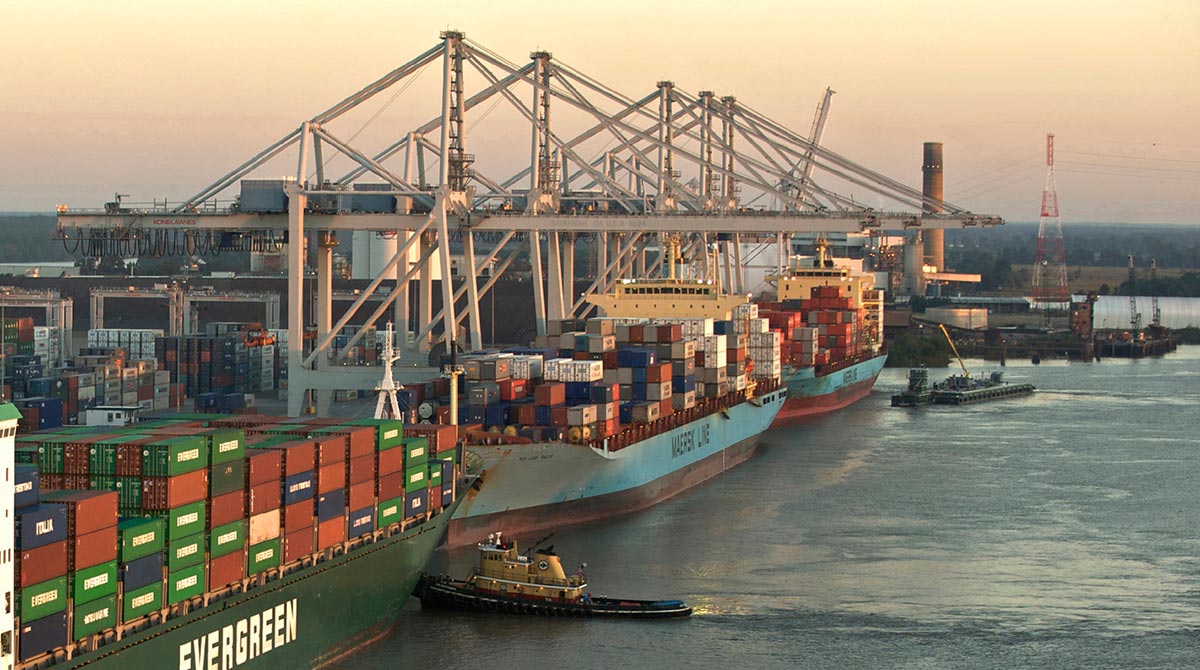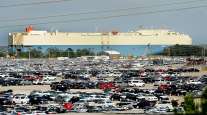Oceans of Cargo Fueling Growth in Atlanta

If you live near Atlanta or other parts of the Southeast, chances are the shoes you bought from Amazon, the chandelier from Home Depot or the shower curtain from Wal-mart probably spent at least some of its life at a metro distribution center.
Whether by click of a mouse or swipe of a credit card inside a store, consumer spending continues to propel growth in the region’s warehousing industry.
According to real estate services firm Cushman & Wakefield, businesses in the Atlanta area leased nearly 6.4 million square feet of industrial space in the first three months of this year, a record for space “absorption.”
Another 15.5 million square feet is under construction, and the vacancy rate of industrial space — mainly warehouses — dipped three-tenths of a point to 8.7%, the Cushman & Wakefield report said.
Metro Atlanta’s warehousing industry has boomed in recent years with tens of millions of square feet of new development and thousands of jobs from companies such as UPS, Amazon and traditional retailers. Consumer spending is a key driver, but so too is the desire of companies to upgrade their supply chains to keep up with buyers who can shop for anything at any time on a smartphone.
UPS ranks No. 1 on the Transport Topics Top 100 list of the largest U.S. and Canadian for-hire carriers.
Roger Tutterow, a Kennesaw State University economist, said that’s big for Georgia, one of the top logistics hubs in the nation.
“One of the cornerstones of the state’s economic development plan is to be a logistics hub for the East Coast,” Tutterow said in a recent interview.
The strength of the state’s economy and the economies of its Sun Belt neighbors’ have helped fuel that consumer spending growth, thanks to the prolonged recovery since the recession.
Georgia’s logistics industry also has benefited from a shift in ocean going cargo coming to East Coast ports, such as the fast-growing Savannah port, rather than being hauled across the country by truck and rail from the West Coast.
Materials coming off ships in Savannah and Brunswick, or American exports being loaded onto vessels there, often stop at distribution points near Atlanta or in Savannah before continuing the journey.
Strength in exports
Steve Grable, an executive vice president with real estate services firm JLL, said the state’s industrial market has been helped not just by consumer spending that’s drawing imports, but strength in Georgia and Southeastern exports as well.
Manufacturers such as Caterpillar ship parts and finished heavy equipment within the United States, and they also export materials overseas. Georgia produce and chickens are in high demand in Asia.
“Savannah has a 50-50 balance,” he said. “That’s a strength of the port because it is so balanced.”
Griff Lynch, executive director of the Georgia Ports Authority, said the state’s ports had their best ever month of April by tonnage.
The authority said it loaded and unloaded more than 333,000 TEUs, or twenty-foot equivalent container units, last month, up 11.7% from the same month a year earlier. For tonnage, the ports’ total grew by 13% to 2.94 million tons, the authority said.
Some of that buoyancy in shipping business has come from the more competitive price of directly shipping to the East Coast. Labor strife and congestion on the West Coast in recent years helped trigger the shift.
Larger and more cost-efficient vessels can transit the expanded Panama Canal, and ports watchers hope that will help sustain and grow the shift to the Atlantic coast.
Earlier this month, the Savannah port greeted the largest container ship to ever call on an East Coast port. The Cosco Development, which can hold more than 13,000 TEUs, arrived May 11 after passing the Panama Canal and stopping in Virginia. More are expected to follow, including an even larger ship due at the port June 2.
High tide passages
The state and federal governments are working to deepen the Savannah River to 47 feet from 42 feet. The largest ships currently can only ply the river at high tide and not when fully loaded.
But the project took a hit last week when the Trump Administration proposed putting less money into the deepening than boosters had hoped. The White House budget calls for $50 million for construction in fiscal 2018, following $42.7 million last year.
Members of Georgia’s congressional delegation vowed to find additional federal funds to keep the project moving without delay.
The deepening is needed to help Savannah compete with rival ports that also are expanding their facilities, backers argue.
“Every major brand is using this port,” said Lynch, the Georgia ports chief. Once goods reach the Garden City Terminal, they’re shipped by truck or rail to trucking terminals or distribution centers across the Southeast, but particularly in metro Atlanta.
During his State of the Ports speech last year, Lynch told the community the Savannah area needs more warehousing. Mainly, he said, the Savannah area needs more capacity to take products out of offloaded containers to repackage it inside different sized containers on trucks. That helps make the port more efficient having trucks and containers closer to the port.
The ports authority is in the process of selling about 500 acres to developers near the port. That will translate into about 5 million square feet of new warehousing space, Lynch said.
Distributed by Tribune Content Agency, LLC




